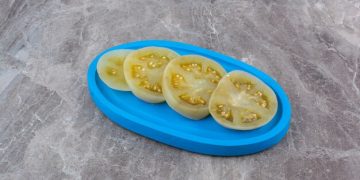
Nance is a tropical fruit found in Central and Latin America, as well as the Caribbean. It goes by different names depending on the region, such as nanche in Mexico, yaca in Colombia, and hogberry in Jamaica. The fruit grows on the Byrsonima Crassifolia tree, a drought-resistant shrub that can reach heights of 10-20 inches. In Mexico and Costa Rica, a red-fleshed variety called Malpighia Mexicana, or red nance, is also common.
Nance fruit resembles a small yellow or orange cherry, typically less than an inch in diameter. It has a unique aroma and sweet flavor, with a white, oily pulp containing up to three seeds. The fruit is usually available in the fall and winter.
Scientifically known as Byrsonima cressifolia, nance is also referred to as Yellow Cherry, Golden Spoon, or Golden Cherry. In Costa Rica, it serves as a significant nectar source. Once picked, the fruit is fully ripe and can be soaked overnight in water to reduce bitterness. Nance is rich in Vitamin C, calcium, phosphorus, and fiber. Its bark and unripe fruits contain tannins and oxalic acids.
Nance can be eaten raw or cooked and is often used in sweet dishes, though it also appears in savory recipes. Its juice is used in jams and to flavor ice cream. In Panama, a dessert called Pesada De Nance is made from the fruit, served hot or cold, and topped with milk or cheese. In Mexico, nance is included in a stew-like dish with olives, rice, and chicken.
The fruit can be hard to find outside its native regions but is available fresh in markets across the Caribbean, Latin America, and Central America. In the U.S., it can be found in specialty stores or frozen in international sections of supermarkets. Preserved versions in syrup or vinegar are also available, though they may contain more sugar and salt.
Nance is often served with chili powder and lime in Mexico. It has various medicinal uses, such as treating rashes, wounds, and pulmonary diseases. Drinking a cup of nance tea three times a day can help with rheumatism, anemia, fatigue, and sore bones. The bark is used for diarrhea, and the fruit is believed to lower cholesterol and fat, aiding in constipation prevention. It also addresses skin wrinkles, hair loss, and memory issues.
In Mexico, the bark is used for gastrointestinal and skin problems, while in Belize, it treats snakebites. In Guyana, it’s applied to wounds, and in Mexico, it’s used for ulcers. The bark can also be used to hide tans, poison fish, and treat various diseases. The roots have antibacterial properties and are used to strengthen teeth.
Nance is an ingredient in jellies, jams, carbonated drinks, and meat stuffing. It’s used in Brazilian and Mexican juices and ice creams for its mild, sweet, and sour taste. In Nicaragua, it’s a key component in the dessert raspados.











































